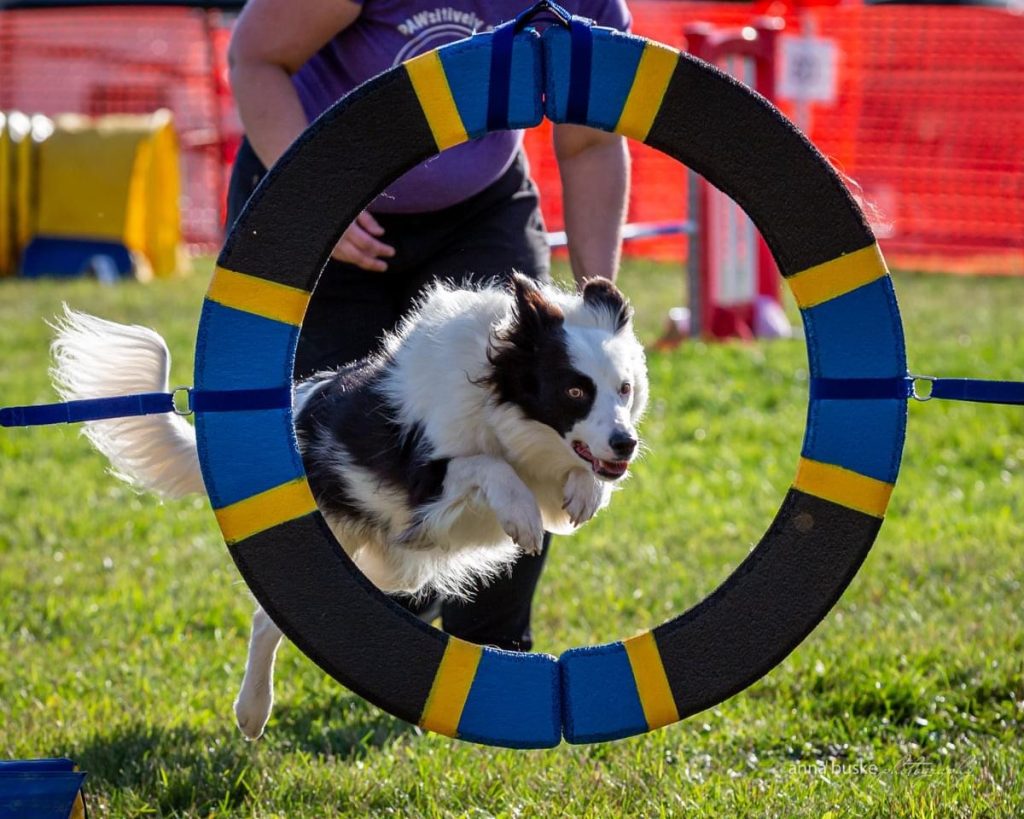Not Just for Sporting Dogs (or Humans)
By Wendy Wright
When one sees those fantastically talented dogs running the agility course around the barrels, over the jumps, up the boards, and through the hoops, their handlers are jumping through proverbial hoops in their minds as well. There is a lot of targeted training for the dogs of course, but also for the human handlers who need to transfer their knowledge of the course to their canines. According to Heather Wark of Sleeping Giant Dog Sports, “This is a sport open to dogs of all breeds, sizes, ages, and ability. Some breeds may have a more natural ability and a higher propensity to do this out of the gate but all dogs benefit.” The handlers do as well.
Since 2020, Sleeping Giant Dog Sports has been running trials (competitions) for local enthusiasts and those from further afield. There are numerous styles and rulebooks followed in the sport, and the local group runs trials under the Agility Association of Canada (AAC) rulebook. Top spots go to the dogs and handlers who achieve a clean run in the fastest time. There are courses for dogs of differing abilities, sizes, ages, and skill levels. The course groups are set out by height, so the obstacles are set at a fair jumping height for those in the group. Courses for both younger and veteran dogs are set up to invite participation from all groups of dogs. There are also groups for handlers with differing abilities. Some courses are set for fun while some are challenging for both the canine and the human.

“Training a dog from knowing nothing to being competition ready takes approximately two years and is appropriate for any dog. Pretty much any dog can benefit from learning agility, whether or not they are competing. Agility training provides exercise and enrichment for any dog,” Wark says. “Whether a dog can compete is another story. They need to have a desire for working.”
Dogs and their handlers working together can be challenging. “Training the human side is interesting. There are times when we put the dogs away and need to train handlers on their own because they need to know how to teach their dog,” says Wark. “The dogs certainly have less embarrassment and don’t tend to worry about any awkwardness when it comes to body movement. It depends on the task.”

There is an upcoming event at Chippewa Park on September 18 and 19. Visitors are welcome to come out and see the joy and sportsmanship of dog agility for themselves.
For more information, visit sleepinggiantdogs.com or find them on Facebook.














